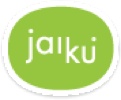2 years ago I had this crazy idea: “How do we get rid of phones” – I thought hard about it, asked friends for ideas, but I concluded that it was just too early – or maybe I didn’t have the vision at that time. People that know me would agree that my vision was somewhat blurred 2 years ago (understatement).
Synchronised “swimming” – because a-synchronous has failed
 Synchronous one-on-one tele-communications, i.e. using phones and instant messengering (IM) is, in many ways, a terrible invention, it’s so stressful, at least to me, when people expect immediate answers.
Synchronous one-on-one tele-communications, i.e. using phones and instant messengering (IM) is, in many ways, a terrible invention, it’s so stressful, at least to me, when people expect immediate answers.
To top it off, it is so rare that you really need to establish “synchronous contact” with anyone far away. “Asynchronous contact” is so much better.
Unfortunately the current batch of asynchronous communication technologies (i.e. e-mail) has failed, mostly due to lousy implementation.
- You can’t rest assured that your e-mail is received
- You can’t rest assured that your e-mail is opened
- It breaks if more people are involved, endlessly forwarding revisions of documents
- Unsolicited e-mails (spam) are filling our mailboxes, and has undermined our trust in e-mail
- People write too long e-mails
- People expect immediate answers
- If you don’t provide an immediate answer, the e-mail might disappear “out of scope”, due to the constant flow of new e-mails
- There’s no concept of body-language, and smilies doesn’t cut it 🙁
Community service for “Big Brother”
Thanks to recent technologies, I believe that it is almost possible to do away with the phone and IM.
So what recent technologies shows this promise:
I believe that it’s the so-called “presence services” like Jaiku and Twitter that are paving the road towards asynchronous Nirvana.
If you inform people, about your whereabouts and what you’re “up to”, and make it possible for them to “pull” that information on demand, they don’t really need to call or TEXT you.
What they do instead is check the log (“pulling” information), usually by subscribing to it in some way (having information “pushed”), so that they’re automatically updated, this means that they rarely have the need to call, TEXT or IM you.
I know that there are problems with the presence services. The biggest problem is that the majority of the world, isn’t ready to volunteer personal information to the public. It’s a bit like doing community service for “Big Brother”.
Another issue that many people will have, is that you, by telling the world,that you’re not at home, also are providing would-be thieves with the same information.
Finally you run the risk of becoming too personal in your presence, because you believe that you’re engaged in a conversation with friends, not realising that the entire world could be listening in.
How I stopped worrying, and learned how to love “presence”
Currently I use the presence services like a public notebook, and it’s so convenient that you can update the log simply by TEXTing the server, most of my presence messages on Jaiku can only be understood by yours truly and, sometimes, people that know me well.
The rest of the world might gain some insight later, because I tend to use the presence messages, as a stepping stone to a blog-post, like the one you’re currently reading, or it might serve as an inspiration for posting some pictures. The positing of a presence message, can also act as an inspiration for what pictures I actually take.
Think of my Jaiku presence stream as a (public) brainstorm.
Here’s my presence messages (“Jaikus”) for yesterday (the 14th of June 2007):
- “Hello! My name is Richard”
- Mindbender – Stringtronic
- Synkronsvømning er “So 80ies”
As you can see the last of these messages, resulted in this blog-post – strangely enough, I got the inspiration from an IM session!
The other two are somewhat cryptic, the first one can’t be understood by anyone but my colleges at work, the second is the name of a group and an album, that was being played at “Kaffe & Vinyl” in Skydebanegade, Copenhagen, when I was there yesterday. Both messages will likely result in blog-posts and the second one, a music purchase.
I predict that the “presence services” will migrate into mainstream business applications, like e-mail and IM has already done. These implementations will likely address, and solve, the privacy issues.
A-synchronous “swimming” revisited
Synchronised “swimming” is SO 80’ies. Welcome to the Nirvana of a-synchronous “swimming”, where the majority of synchronised “swimming” will be performed in the same “swimming-pool”, the “swimming-pool” called IRL.
Now why didn’t I come up with that idea two years ago?
Photo from Wikipedia (Image:Synchronized swimming – Russian team.jpg – originally uploaded to Flickr by Jesus de Blas and released under a Creative Commons Attribution ShareAlike 2.0 license)






